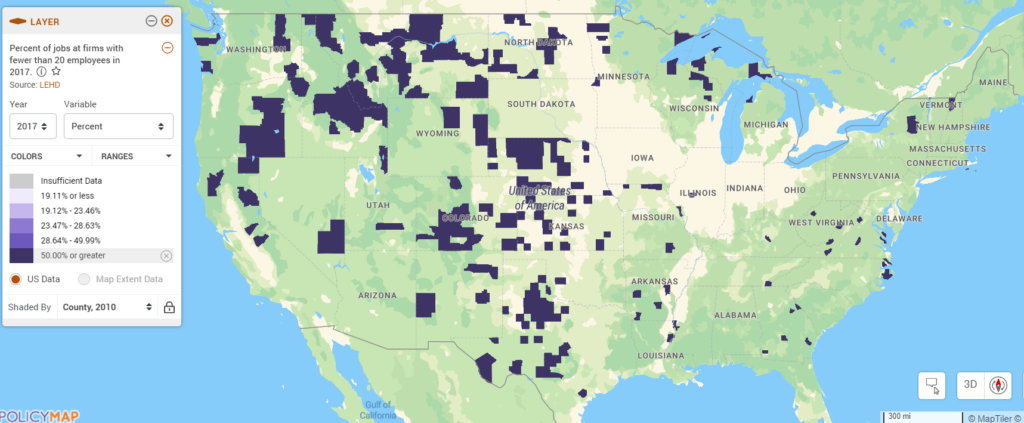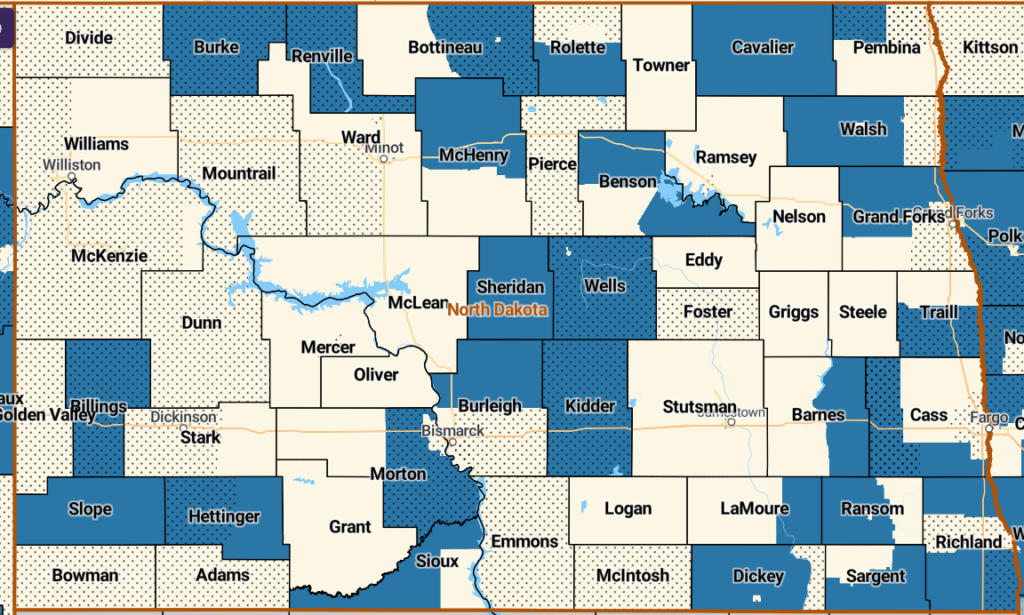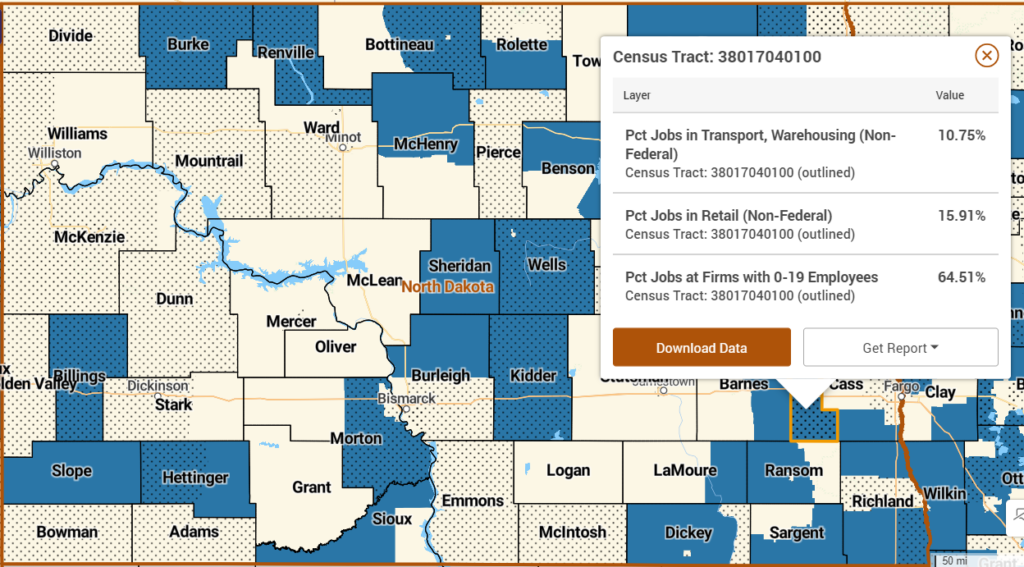Digging Deeper: Where Small Businesses Employ Most Workers

As COVID-19 rates continue to climb across the US, particularly in Midwest states such as North Dakota, new mask mandates and business restrictions are being implemented to reduce the spread and prevent health care systems from becoming overwhelmed.

These types of restrictions are essential from a public health perspective but also negatively impact small businesses, particularly those in certain hard-hit industries, most severely.
Research from the Federal Reserve Bank of Philadelphia indicates that small businesses, particularly in retail trade, transportation, employment services, travel arrangements, arts, entertainment and recreation, and accommodation and food services, are most at risk from policy responses to COVID-19. Their research found that about 23 percent of small businesses were most likely to be affected by the pandemic.
According to the Census Bureau’s 2016 Annual Survey of Entrepreneurs, small businesses with less than 20 employees employed 16.8 percent of the US workforce. Using 2017 Longitudinal Employer Household Dynamics data from the Census, however, we can identify counties where these small businesses employ more than 50 percent of the county’s workforce. Many of these counties sit within areas of the US that are experiencing some of the highest COVID-19 infection rates to date.

Using this same data, we can dig deeper into North Dakota specifically to identify those places where small businesses, and the people they employ, may be in most need of support to survive the COVID-19 business environment.
In North Dakota, small businesses located in the census tracts shaded blue on the map below employ more than 50% of all workers in that tract. Areas that are additionally shown with a dot pattern contain higher percentages of firms in high-risk industries such as retail and transportation.

64.5 percent of workers in Cass County, for example, are employed by a small business, almost 16 percent work in retail, and nearly 11 percent in transportation.

The overlay of this jobs data can help target the scarce resources currently available for businesses or for advocating for additional resources during this time. Learn more about the data available in PolicyMap to help with COVID-19 economic or public health strategies or contact us.